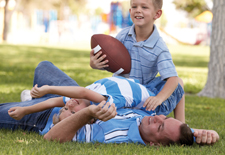
Integrated Pain Care
A Pain Management Clinic of Excellence
Phone: (510) 758-7462
Fax: (800) 806-5602
Spinal Stenosis
Share This Everywhere!
Spinal stenosis is a condition that causes abnormal narrowing of the spinal column that places pressure, or compression, on the spinal cord. It may also cause a narrowing of the openings in the spine (called neural foramina) through which the spinal nerves exit the spinal cord and bony spinal column. Spinal stenosis occurs most frequently in the cervical (neck) or lumbar (lower back) portions of the spine.
The main cause of stenosis comes from age-related changes in the body. As a person ages, they often develop osteoarthritis when the intervertebral discs dry out and collapse, leading to bone spurs or thickening of the vertebral ligaments from chronic inflammation. This is the most common risk factor for developing stenosis in middle-aged or elderly people. Injuries that cause pressure on the nerve roots or spinal cord, spinal disc herniation, development of spinal tumors, and bone diseases such as Paget’s disease are other common risk factors for developing this condition. Although stenosis may occasionally be caused by congenital defects, it is relatively rare occurance.
As the spinal cord becomes restricted, it causes symptoms of neurological deficit due to nerve compression. Many people with spinal stenosis may not even be aware they have it, and show no signs or symptoms. For those people, symptoms may start slowly and worsen over time. These symptoms may include pain, numbness, cramping, a pins and needles sensation, and weakness in the affected extremity. More serious symptoms may include a loss of motor function in the affected area that may restrict the ability to walk or balance, or cause problems with controlling urine or bowel movements. The symptoms tend to be worse while standing or walking, so sitting or leaning forward may offer some relief.
Diagnosing this condition will usually begin with a doctor performing a physical exam and taking the patient’s medical history. A complete evaluation of the spine is necessary, and may include sensory and reflex tests, and imaging studies such as x-rays, CT scans, or MRIs. These exams will not only help to diagnose the problem, they will also precisely locate where the pain originates from and the extent of the nerve compression.
Treatment of spinal stenosis includes both conservative and surgical approaches, depending upon the severity of the pain and degree of narrowing that exists in the spinal canal. Conservative treatments begin with anti-inflammatory medications and over-the-counter pain relievers. If these aren’t enough to control the pain, the doctor may prescribe opioids, tricyclic antidepressants, or anticonvulsant drugs that are effective at controlling nerve pain. Medications may be combined with physical therapy to increase strength and flexibility, improve balance, and control pain. A back brace might be recommended to offer some support and help relieve symptoms. Corticosteroids injected directly into the space surrounding the affected nerve(s) reduce the inflammation and irritation causing pain. This may offer more long-term pain relief than medications, but more than one injection may be required. If these conservative treatments fail, surgery may be the only method of achieving pain relief. It is considered when the patient is significantly disabled by their symptoms and is otherwise healthy. Spinal decompression surgery increases the space in the spinal canal, and there are several procedures which may be helpful. Removal or trimming of the lamina portion located at the back of the vertebra is called laminectomy, and achieves widening of the spinal canal opening. Foraminotomy is performed when widening of the opening in the vertebrae where the nerve roots exit the spinal canal is required. Spinal fusion may also be necessary, which permanently fuses two vertebra together to prevent movement and immobilize the area.
The prognosis for people with spinal stenosis varies depending upon the severity of the narrowing and the cause of the condition. Many people will continue to remain active, with only minor changes in their lifestyle necessary. Surgery may give a significant percentage of people long-term relief of their symptoms, although patients who have had spinal fusion surgery or a combination of two or more surgical procedures may be more prone to future problems.
Anyone with symptoms of spinal stenosis like back pain should contact their doctor, but those experiencing serious symptoms such as difficulty walking or maintaining balance, problems with controlling urine or bowel movements, or significant numbness or neurological deficit should seek immediate medical attention.

